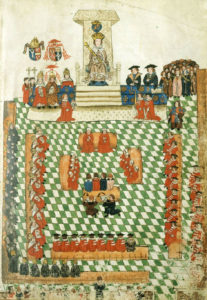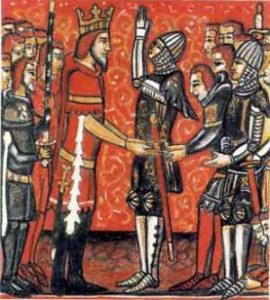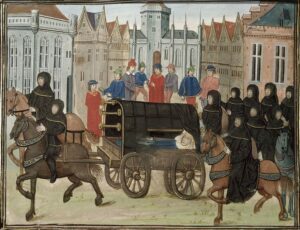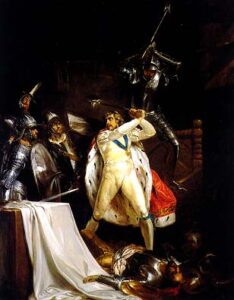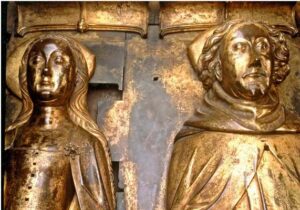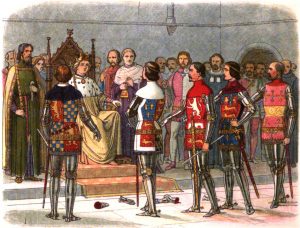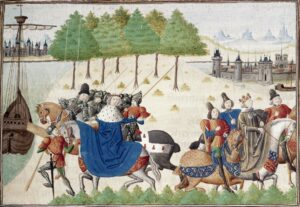Medieval Parliament, Royal Collection, RCIN 1047414: Source, Wikipedia
As I alluded to in my previous article about Different Layers of Knighthood, the gentry was an evolving class in the fourteenth century that was starting to find its own voice. There are no hard and fast distinctions for nobility and gentry, and no legal definitions. Naturally, there are exceptions to every convention.
But before we go there, it would help to define nobility, a term also subject to interpretation. The most common definition was put forward by K.B. McFarlane. He defined a noble as a man who was summoned to parliament. Ideally, he would have inherited this privilege, or achieved his title by marriage to a daughter of a noble. The nobles became peers of the realm, a wealthy and exclusive membership that continually decreased during the fourteenth century due mostly to extinction. Nobles who didn’t have a title (duke, earl, etc.) were referred to as barons. Below the baronage ranked the knights bannerets; some were given special preference by the king and summoned to parliament through having distinguished themselves militarily rather than by feudal tenure. By 1425 the distinction between barons and bannerets had disappeared.
In the house of lords, the nobles were summoned; in the house of commons, the members were elected locally or assigned by a sheriff. This is where the gentry comes in, also known as the ‘knightly class’. This class was composed of three groups of landholders: knights, esquires, and gentlemen (in that order); the term ‘gentleman’ was first documented in 1384. By the late fourteenth century, the knight’s main focus was less military and more administrative. He was certainly a landowner and was “regularly involved in the judicial and financial administration of their shires… For the magnates, they served as stewards and councilors”.* Lineage was an important aspect of knighthood, as well as financial worth; most held land worth between £20 and £40 per annum. This is opposed to an earl, who was required minimally to possess a revenue of £1000; lesser peers were expected to command £250 per annum. “Around 1300, the ‘knightly’ or gentry class consisted of between 2,500 and 3,000 landholders, roughly half of whom were real (that is, dubbed) knights, while the other half (generally styled esquires) were men who for various reasons had decided not to assume actual knighthood.” *
As the gentry became more influential in parliament and exercised control in local shire offices, both Richard II and Henry IV began to retain knights more frequently so as to directly influence local politics. Richard’s behavior was more obviously manipulative, and tended to alienate the commons; Henry’s immediate popularity after his coronation made it easier to appoint his own men as sheriffs and JPs, and he often did so regardless of their experience. This created its own set of problems, but as far as he was concerned, their loyalty was more important than their productivity. Ironically, Henry succeeded in stacking parliament in his favor, whereas Richard was condemned for doing the same thing.
FURTHER READING:
* Given-Wilson, Chris, THE ENGLISH NOBILITY IN THE LATE MIDDLE AGES, Routledge & Kegan Paul, London, 1987
Given-Wilson, Chris, THE KING AND THE GENTRY IN FOURTEENTH-CENTURY ENGLAND, Transactions of the Royal Historical Society, Vol. 37 (1987), pp. 87-102
McFarlane, K.B., THE NOBILITY OF LATER MEDIEVAL ENGLAND, Oxford at the Clarendon Press, 1973
